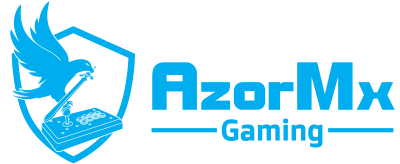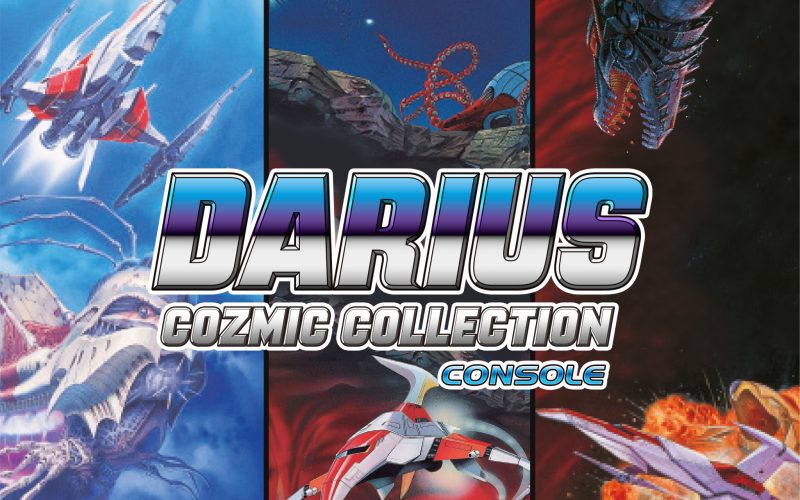This is it. We have finally managed to reach the shmup that started it all. The one shmup I played before any other and which inspired me to devote my time to the genre. It isn’t the best Darius game by any means, but it is certainly the one closest to my heart. We are finally reviewing Super Nova!
Ok, maybe we’re not just reviewing Super Nova. We are going to be taking a look at the entire Console Cozmic Collection and seeing how it stacks up against the Arcade Collection. They say console ports are usually downgraded versions, but will it also be the case here?
Publisher: ININ Games
Platform: Nintendo Switch
Release date: Jun 16, 2020
Price: $59.99
Tate: Please don’t use your flip grip on this one
The Darius Cozmic Collection Console is a compilation of Darius games released on consoles. This port was also developed by the brilliant M2. You can definitely set your expectations on high, because this collections is as high quality as the arcade collection, albeit with some notably absent features.
The titles included in this collection are:
- Darius II (Mega Drive, JP version)
- SAGAIA (Genesis, US version)
- SAGAIA (Master System, EU version)
- Darius Twin (Super Famicom, JP version)
- Darius Twin (Super NES, US version)
- Darius Force (Super Famicom, JP version)
- Super Nova (Super NES, US version)
- Darius Alpha (PC Engine, JP version)
- Darius Plus (PC Engine, JP version)
The bestest ports are M2 ports
If you read my review for the Arcade Collection, then you know what to expect from this collection. Each of the 9 included games feature a wonderful wrapping of quality of life enhancements as well as customization options.
Each title can be accessed from a main menu that features a museum style listing for each game. When highlight a game, you will be presented with an image of the title screen and a brief description of the game on its right. I found the descriptions extremely helpful when deciding which game to play. Having several versions of the same game is great for collection purposes, but the descriptions provided some much needed guidance.
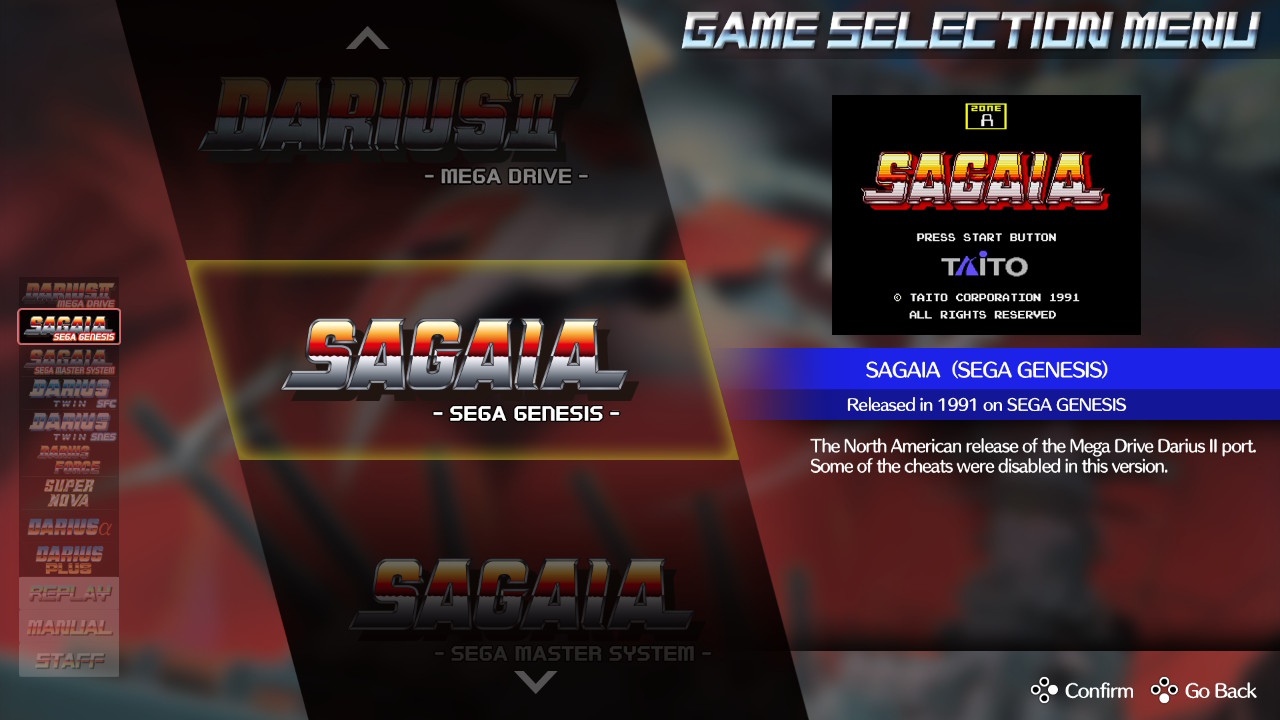
While in-game, you can pull a special menu at any point by pressing ZR or ZL. This menu lets you customize several aspects of a game, such as the controls and the visuals. Just as the arcade collection, you can set your controllers to map buttons to be fire+bomb and even adjust the rapid fire setting. The visuals have less options, but staples such as the display type and scanlines are available. The “other” tab is quite lacking, as it only has the volume setting.
It wouldn’t be much emulation without some save states! Each game has a quick save option which lets you save your current state in one of 12 different slots. The saving and loading process is very smooth, and it doesn’t take any time at all to load any given state. Unlike the arcade collection, there are no ranking penalties for using save states. Rather than being a good thing, it mostly relates to a lack of rankings, but more on that later.
The missing features
Whereas the arcade collection felt like a love letter to the arcade culture, the console collection lacks a lot of the charm. It’s in part understandable due the nature of consoles not being as flashy as arcades. I don’t mean to say that the work in this collection is lacking in comparison, it’s just that in general arcades had much more going on.
One of my highlights in the arcade collection was my introduction to Darius I with controller vibration in sync to the music. Sound and vibration fanfares were not available on console because there is no such thing as coin operated credits. As a result, rumble is completely absent in this collection.
All of the gadgets are missing from this edition as well. Rather than getting the art of the arcade panels or useful information, all the console collection gets is a background. When looking at both collections side by side, the console collection like extremely empty, as you only have the game screen and nothing else. The only exception is Darius Alpha, which has a boss gadget on the right side of the screen.
The long lost game changers
To the detriment of gameplay, some of the more useful gadgets won’t be making a return. Losing the boss analyzer and life gauges is rough, but pales in comparison to losing your arm counter. Other than relying on in-game visuals, you no longer have additional graphics showing arm strength, weapon strength or even bonus score counters.
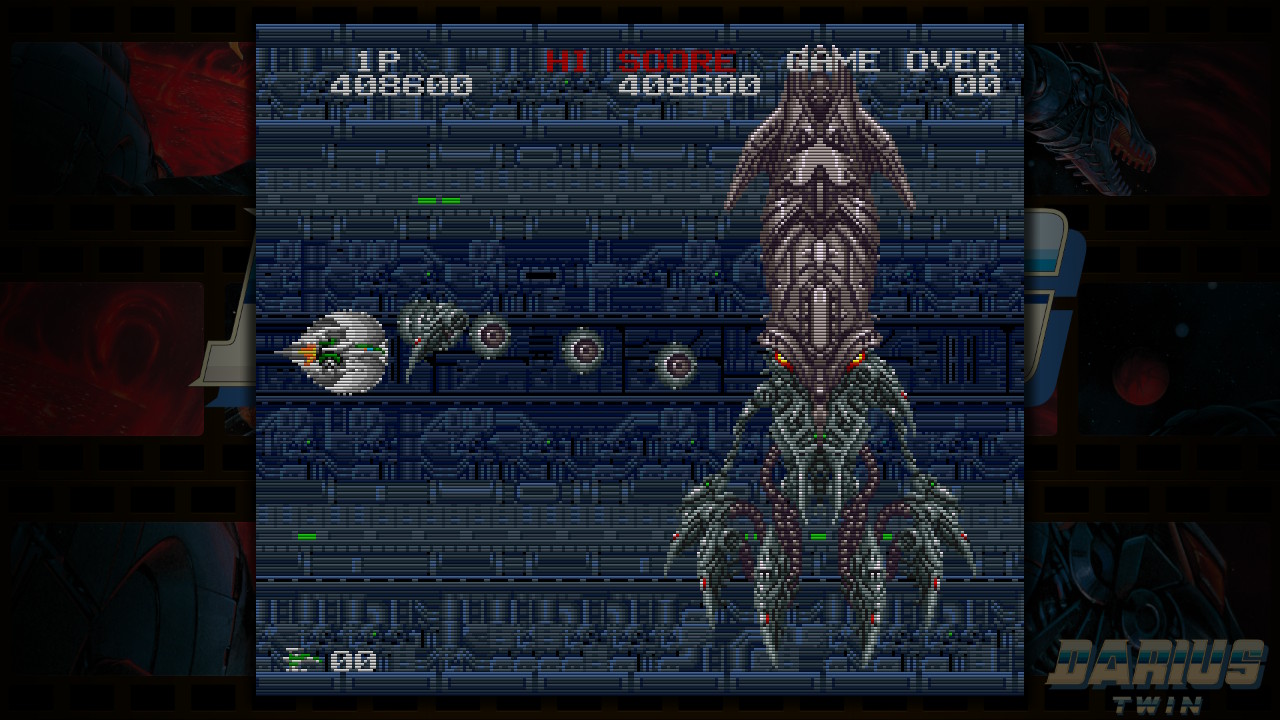
Another addition I was really fond of was the map/zone overview on the pause screen. Most of the games show the route progression in-game (except for Darius Plus). What is lost is the ability to see the map at any time by pressing ZR/ZL, and even worse is losing the information related to a zone. I really enjoyed knowing how many power-ups were present in a given stage, but I absolutely loved knowing which bosses would appear on which route. My routing decisions have 100% been influenced by fighting cool fishes.
To make matters worse, the replay system has been completely revamped. You can no longer save replays of your playthroughs in most of the main games. Instead, replays are reserved only for the special modes of Darius Alpha, the boss rush of Darius Force and the boss rush of Darius II. While this means there’s still a way to relive some of your greatest moments, it is limited to some modes which pale in comparison to the actual games. Oh yeah, the leaderboards are also limited to the special modes as well.
But enough about the collection, let’s get to the games.
Darius II/SAGAIA
Darius II and SAGAIA are ports of the original arcade game into the Mega Drive/Sega Genesis. As with arcade ports, the game had to undergo some changes in order to be playable on consoles. Sprites were redrawn to be smaller, gameplay was adapted to a single screen and co-op had to be removed. Still, it manages to fit the entire Darius II in both versions, as opposed to arcade SAGAIA which was a reduced version.
Just to clarify, Darius II and SAGAIA are the same game. The difference in naming comes from localizing the game to North America.
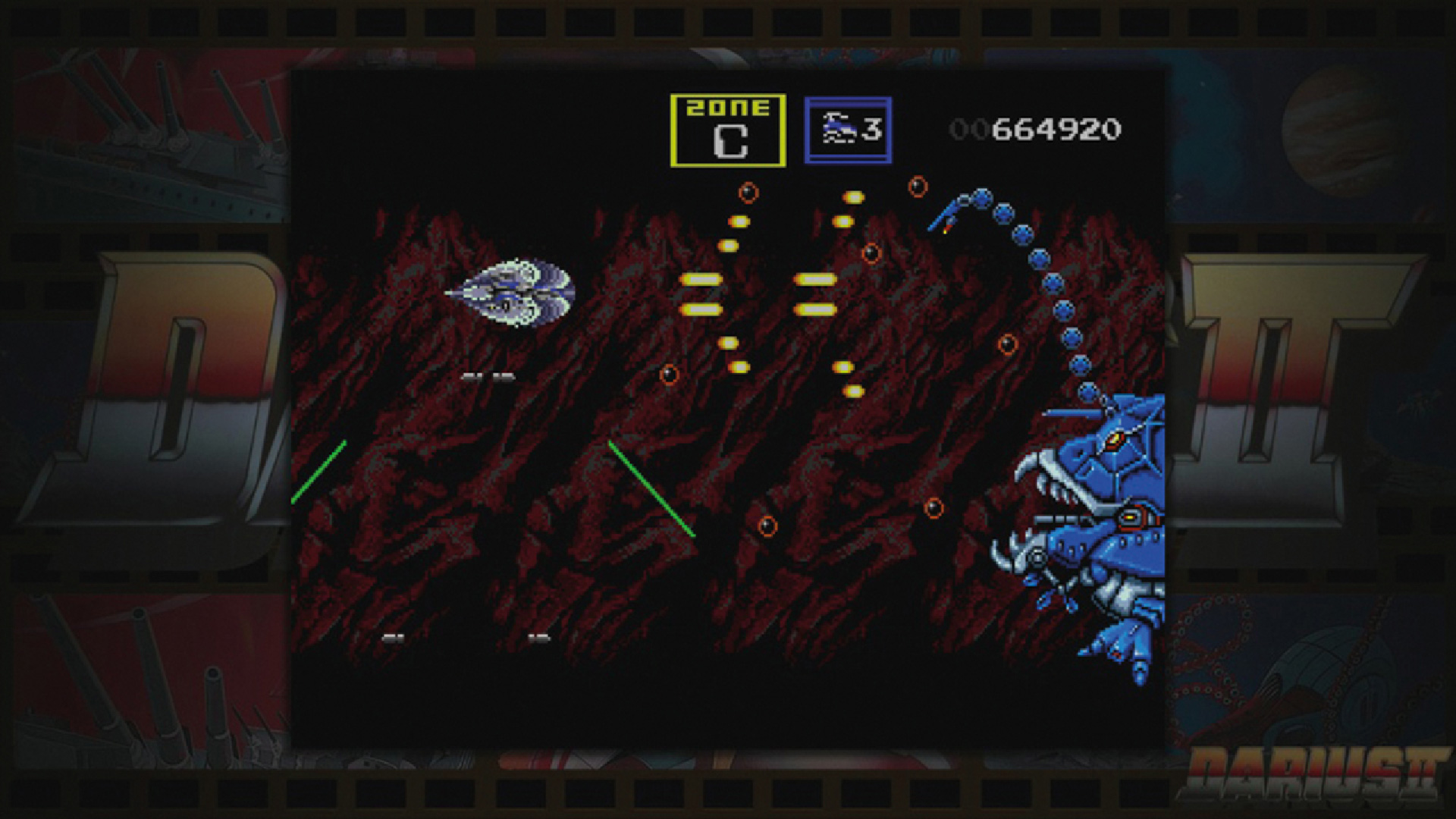
I’ll be honest, out of all the games in the collection, this was the one I played the least. I don’t mean to say the game isn’t good. My reduced play time comes from the fact that I already played A LOT of Darius II for the arcade collection, so for an in-depth overview I recommend checking out the Arcade Collection review.
However, I did get a couple of full playthroughs and I gotta say that it does a great job at capturing the original game’s essence! Gameplay is essencially untouched, so expect to go through the same all-or-nothing upgrade system, branching paths with Darius II bosses and some wacky endings! One of my thoughts that I have to rehash is that the game is either a cakewalk or extremely brutal depending on your upgrade level. If you keep it maxed, then the game is a breeze. If you fall even once, it’s a very tough hill to climb.
SAGAIA Master system – The budget Darius
In an odd turn of events, a version of SAGAIA was released for the Sega Master System. For those unfamiliar, the Master System is basically the equivalent of the NES. This game exists because the 8-bit market was still going strong in Europe when it released.
As impressive as it might be to have SAGAIA on an 8-bit console, we have to consider that it had to be downgraded from an already downgraded version. If it sounds rough, it is because the game itself is extremely rough. The framerate is lower, the sprites flicker on screen and the game lags when there are too many sprites on screen.
I found it next to impossible to play this game for long periods of time. It really is hard to justify playing the lesser version when I have better alternatives in this same collection.
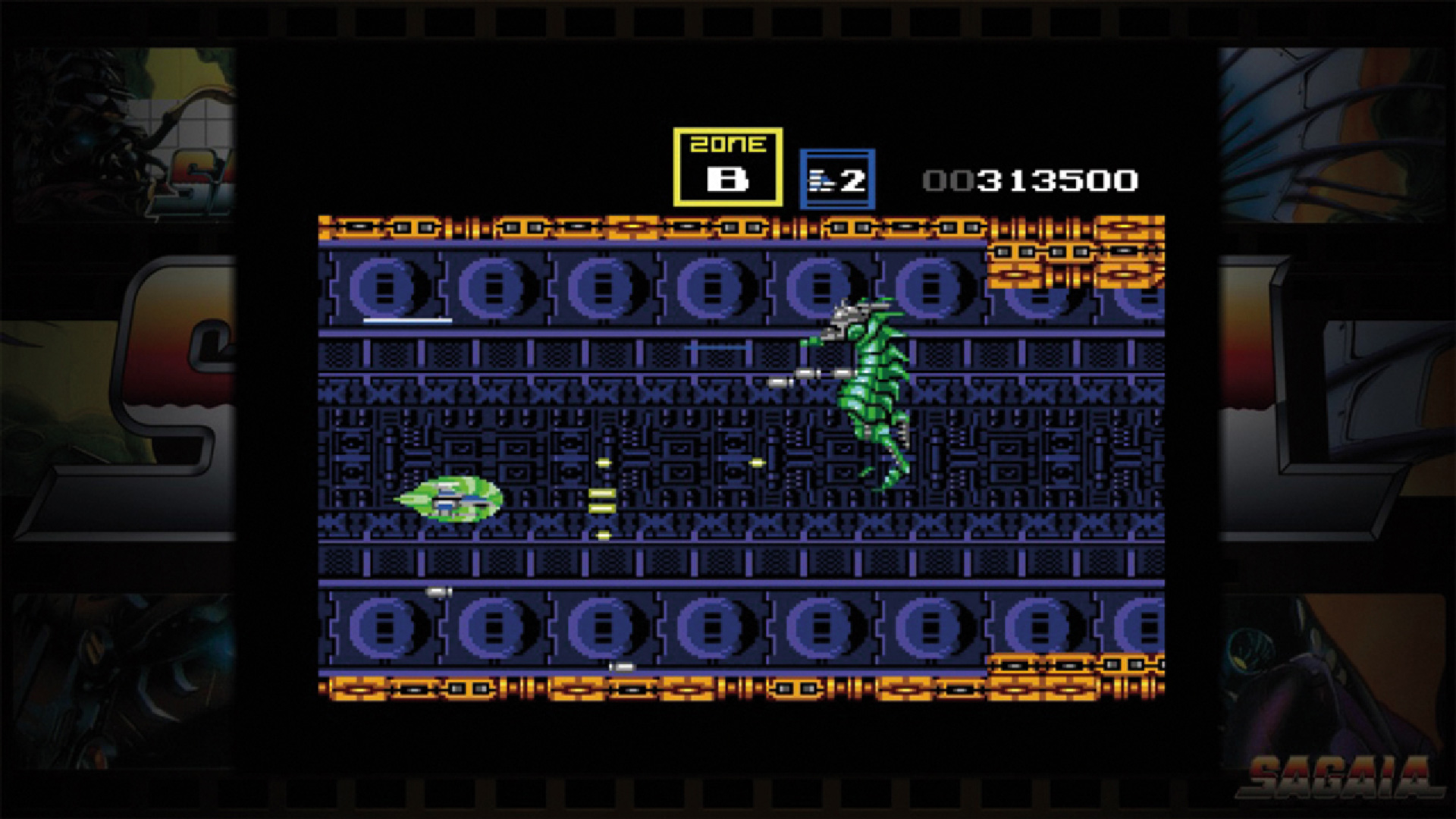
Darius Twin
Darius Twin was the first Darius to actually be made for consoles. It isn’t an arcade port or a game adapted from a multiple screen format into a single screen. Darius Twin is a completely original entry, and as such it takes full advantage of the console format for the better!
Out of the box I have to say this: Darius Twin is easily my favorite game on this entire collection. The biggest reason is that this feels like a game that doesn’t try to be a coin sink. Instead, it plays around with the concept of a single credit and balances the game around it. The result is a shmup that feels much more fast paced, but never overwhelming and certainly not one where it’s impossible to repair from death.
In terms of mechanics, it is by all means a Darius game in its fundamentals. Pilot the Silver Hawk through branching paths, collect red/green/blue upgrades and beat the fishes. One distinct difference is that you do not lose your power level on death. Although it doesn’t sound like much, I do believe this is the one difference that greatly improves the experience.
Previous Darius games have felt, to varying degrees, as games that should be played without getting hit or else risk not being able to recover. Since Darius Twin doesn’t have this hindrance, you are always in your best shape and it helps keep the fun going. You do have to be careful, as you respawn without arm, but other than that it’s never a lost cause.
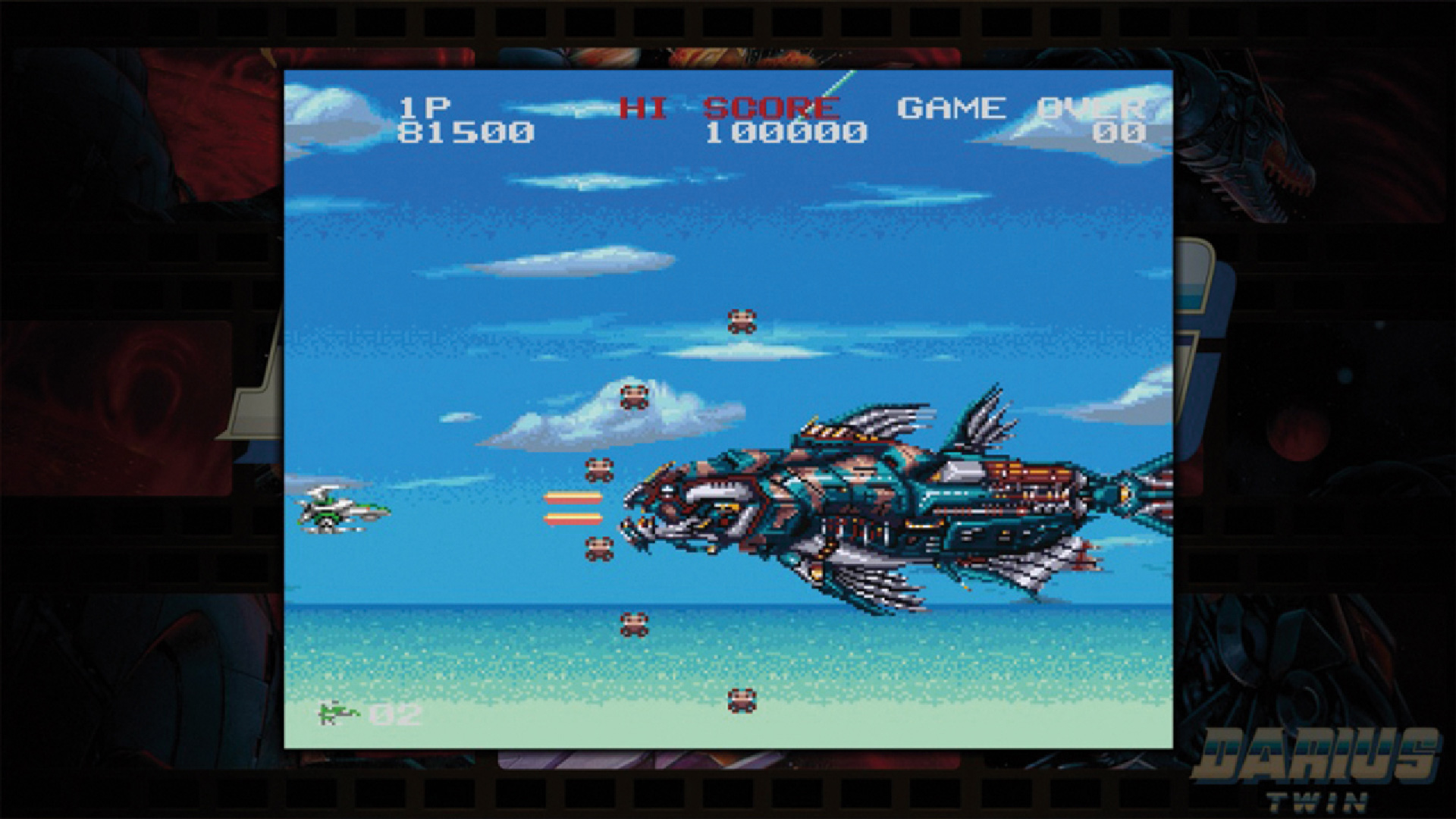
SNES and Super Famicon
Darius Twin comes in 2 different versions: One for the SNES and the other for the Super Famicon. Unlike other entries, the versions are for the most part the same. The difference is that the SNES version has localization. It also features stereo sound, whereas the SFC version had mono. Although it is nice to have the SFC version, in reality you probably want to play the SNES version all the time. Unless, of course, you want humanity to create weapons made from the bones of its kill instead of wood and rocks.
One of the most surprising aspects about Darius Twin is the sound. I’m unapologetically a SNES fan, so when I heard the game’s OST and sound effects, I felt a wave of nostalgia. The tracks and sounds are very SNES-ish and it is a style that I’m very fond of.
I really encourage everyone to go hard on this game. I really enjoyed it and I think you might share my love if you give it a go! It offers a perfect blend of action and challenge which pushes you to your limits, but is never unfair. As an extra bonus, it features several different endings depending on how many lives you lost, with the best ending being unlocked on a true no death run. Also, once you max your wind slash, don’t pickup the weapon swap.
Darius Force/ Super Nova
Super Nova is a special game for me. It is the one game I remember seeing on the video store and renting thanks to the cool box art. The first stage is a memory I can vividly remember. The first enemy waves, the trilobyte miniboss, the boss theme and even his name: Biohazard.
As a side note, to this day I don’t really know who is the boss on the Super Nova box art. Judging by how long it is, it might be Peace Destroyer, but I’m not really sure.
Darius Force was released after Darius Twin. It certainly has console gaming in mind, but it draws several gameplay elements from arcade Darius. Sadly, they brought my least favorite: the checkpoint system. Dying in Darius Force has to be one of the most disappointing experiences. Upon death, the screen blacks out and you are taken back to the last checkpoint you crossed. Your beam and bombs are reset to level one, although you keep your arm upgrade levels.
It’s also the first game to feature bosses other than marine organisms. Expect to see prehistoric creatures and dinosaurs.
To counter balance the checkpoint system, Darius Force is much more generous on the power-ups. After returning to a checkpoint, you are always treated to a beam and arm power-up. A level 2 beam is quite a downgrade, but at least you get an arm to claw your way back into the game.
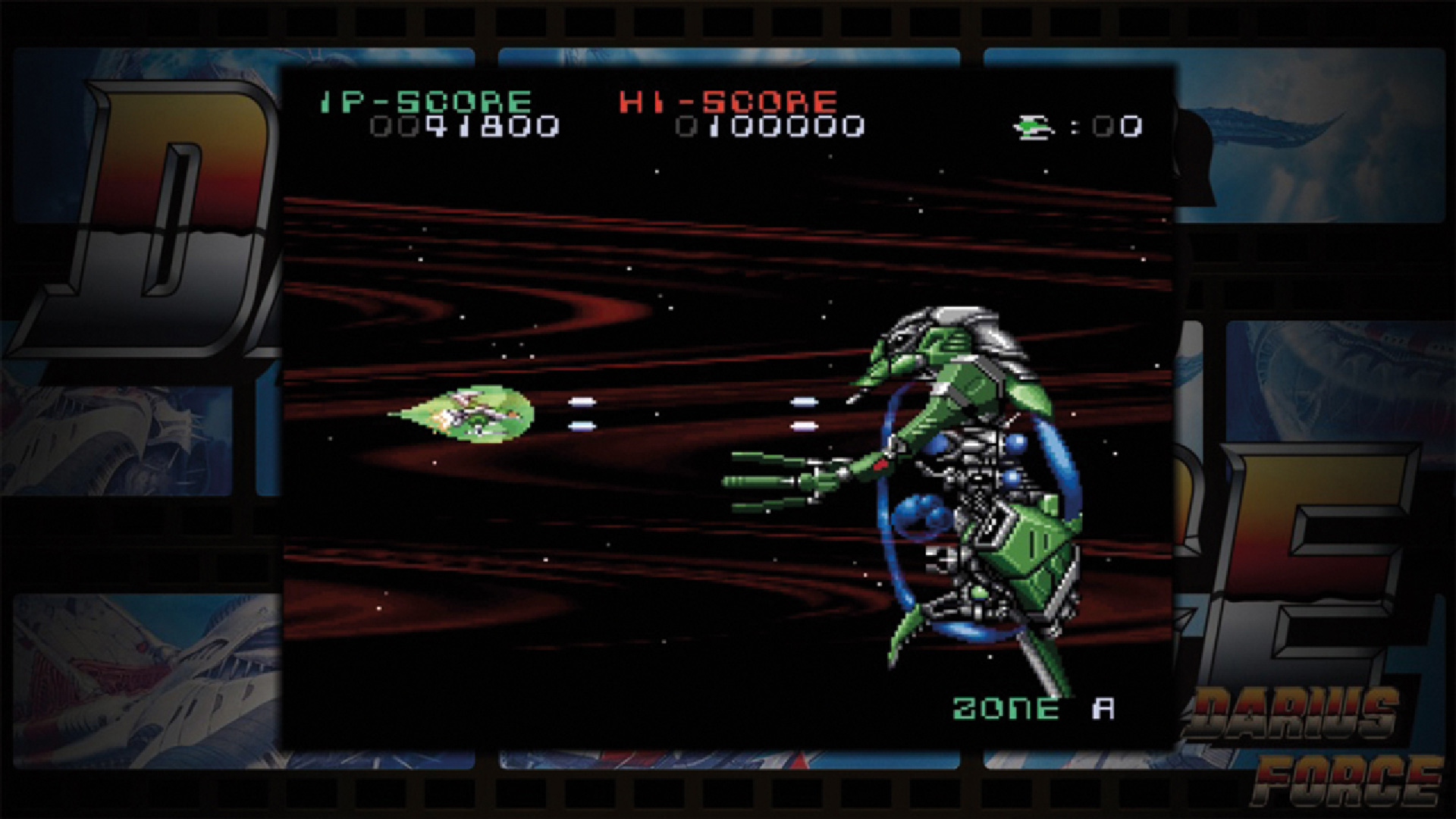
A tribute to the classics
One of the new features of Darius Force is the ability to choose your ship. At the beginning, you are given a choice of 3 different models of the Silver Hawk. The green Hawk is based on Darius I and has the wave upgrade path. The blue Hawk is based on Darius II with the napalm beam. Finally, the red Hawk is an original ship.
Another change is the fact that beam and bombs upgrade together. There are 8 different upgrade levels, with your main beam switching fire type until its final form. Collecting a red power-up will upgrade both of them 1 level. As mentioned before, dying will set you back to level 1, so it becomes crucial to stay alive once you reach level 8. A neat change is that, for the first time, you can switch your bomb type between bomb and laser. Bombs will deal more damage, while laser will go through weak enemies.
The merger of beam and bombs also has a neat strategic implication. For one, you can no longer freely shoot your beam in tandem with your bombs. If you attempt to press both buttons at once, you will fire a downgraded version of both the beam and bombs. This means you need to be more mindful of whether you want the power of your beam or the power of your bombs.
Intentional weakness
Luckily, downgrading your weapons might actually be a desirable outcome. For me, the middle levels of the green Hawk were too awkward to use, as they were piercing lasers. By pressing both buttons, I was able to revert to the trusty spread shot until my level was high enough to bypass the beam in favor of the wave shot. If you think about it, the laser is a lot like puberty. No one really likes puberty, but it is an important transition phase we can totally avoid by firing and bombing.
Darius Force includes an extra boss rush mode that was previously accessible with a special code. Rather than needing complicated button inputs, the boss rush mode can be directly accessed when choosing Darius Force from the main menu (not available for Super Nova). It is also one of the few modes which have been blessed replays and leaderboards.
Darius Plus/ Darius Alpha
Finally rounding up the collection are the PC titles. You can think of them as parallel universe versions of the main game.
Darius Plus is a “lite” version of Super Darius, which itself is a souped up version of the original Darius. So you can think of it as just a port of Darius on a single screen format.
As a port of Darius, it has all the levels you are familiar with, while boasting 16 different bosses. The rest of the gameplay is straight up Darius, with the notable exception being that the action is reduced to a single screen instead of having 3.
In terms of where I stand on Darius Plus as a game, I gotta say it is fun but a straight up worse version. The game doesn’t look as clean as the arcade version and the sound is also worse. I also feel like the levels are longer, or perhaps it’s just the screen reduction making levels seem longer than they should be. One thing for sure, is that the gameplay feels dragged on to the point of feeling boring at times. There are sequences that felt like they repeat endlessly until you reached the end of the stage.
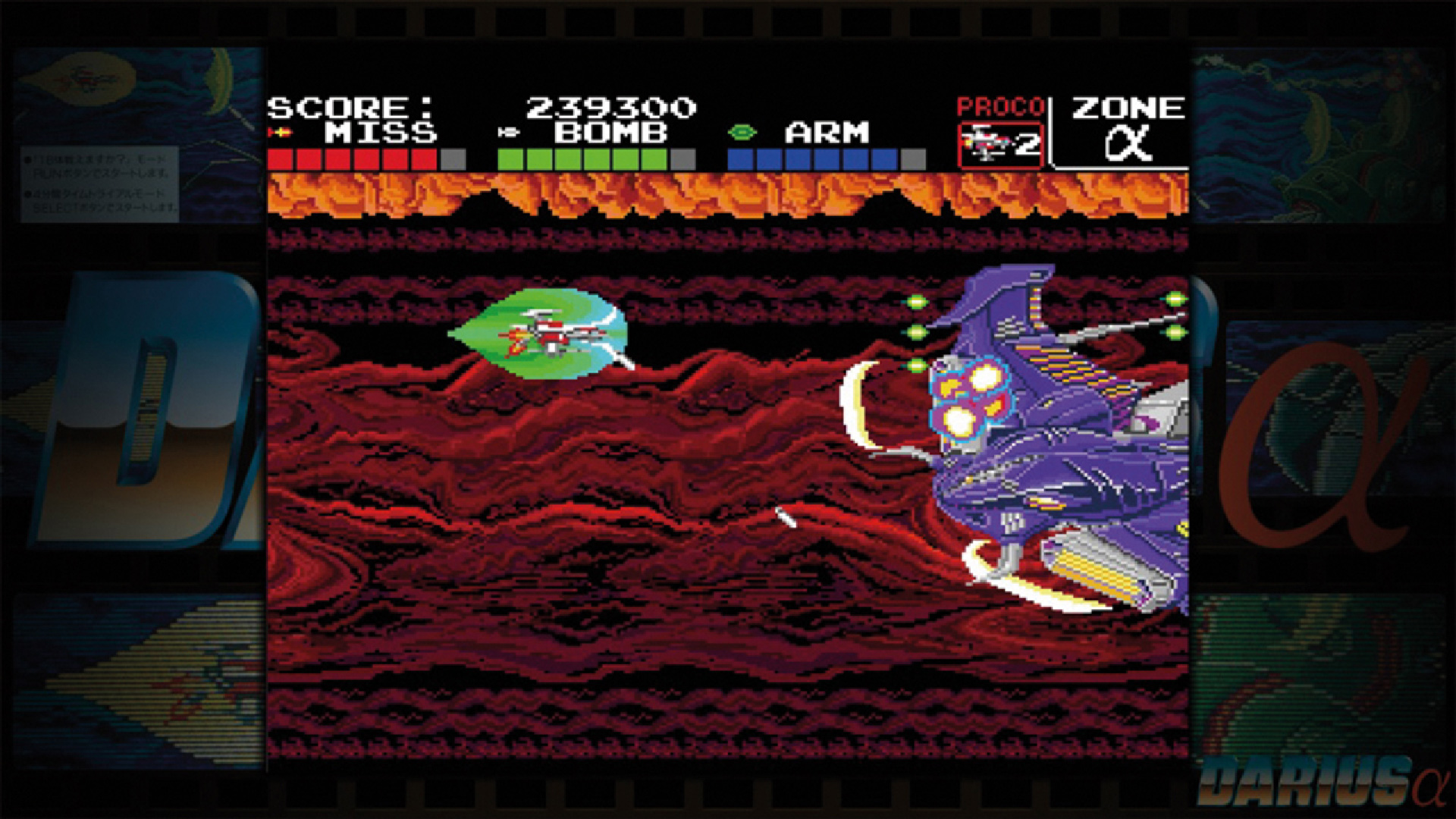
The one thing it’s got going over the its original arcade counter part is the 1cc gameplay. Rather than being able to pump credits endlessly, Darius Plus plays on a single credit and is balanced around that as a result. One particular change that makes me happy is that you don’t return to a checkpoint upon dying.
This game exists to remind me how much I hate the laser on the original Darius.
Darius Alpha: The boss rush: The game
Finally we have Darius Alpha, the compilation of the extra modes. Instead of being an actual game, Darius Alpha is a boss rush against the 16 bosses. Just like Plus, you have a single credit to beat the whole game. Power-ups are automatically acquired in between boss rounds, but the same restrictions as the main game applies. This means that you will lose your power level if you die, up until your latest upgrade.
The selling point of Alpha in this collection is that it has most of the ranking modes for the collection. The extra modes are the following:
- Score attack mode: A score run of the entire gauntlet with save states disabled. This is the true competitive mode, as it features leaderboards and it actually saves your replays.
- Time attack: Also a run of the entire gauntlet without save states, but this time focusing on clear time instead of score. It also has leaderboards and replays.
- 4min time trial: A sort of “Caravan” mode that gives you 4 minutes to reach the highest score. It also features leaderboards and replays.
Last words
Out of the gate, I have to say that this is the worse of the 2 collections. The arcade collection has the Darius games in its pure arcade form. Games which stand strong even to this day when it comes to quality. M2 took these games and made them even better with their porting expertise and several love letters to the games. The console collection not only contains downgraded versions, but also lacks some of the finer details that made them great in the first place.
Despite having more games, Darius II/SAGAIA and Darius Plus are basically downgrades of Darius II and Darius I respectively. This leaves us with Darius Twin and Darius Force to carry the collection, and they actually do! Darius Force might not be as fantastic as I remember, it certainly feels slower than I remember, but I did constantly revisit it while creating this piece because it is a very enjoyable game. Darius Twin was the great surprise, as I find it to be my absolute favorite in this collection, and a strong contender to Darius Gaiden in my opinion.
With all that being said, I consider the contents of this collection to be very good, but with a very notable flaw: the price. At $59.99, this collection is a very tough sell. I can’t in good faith recommend it highly, as the same amount of money can purchase several highly rated titles in this list. In fact, it could even get you the arcade collection and the #1 shmup Ikaruga. Still, the quality of the collection is something I can’t deny, so I’ll be weighting that much more than the price in its final ranking.
THE RANKING SO FAR:
- Ikaruga
- Psyvariar Delta
- Darius Cozmic Collection Arcade
Devil Engine- Rolling Gunner
- Blazing Star
- Jamestown+
- Darius Cozmic Collection Console
- Tengai
- Steredenn: Binary Stars
- Stardust Galaxy Warriors: Stellar Climax
- Sky Force: Reloaded
- Strikers 1945
- Black Paradox
- R-Type Dimensions EX
- Sine Mora EX
- Shikhondo – Soul Eater
- Ghost Blade HD
- AngerForce: Reloaded
- Aero Fighters 2 (ACA Neogeo)
- Q-YO Blaster
- Lightening Force: Quest for the darkstar (Sega Ages)
- Pawarumi
- Red Death
- Task Force Kampas
- Switch ‘N’ Shoot
- Last Resort (ACA Neogeo)
